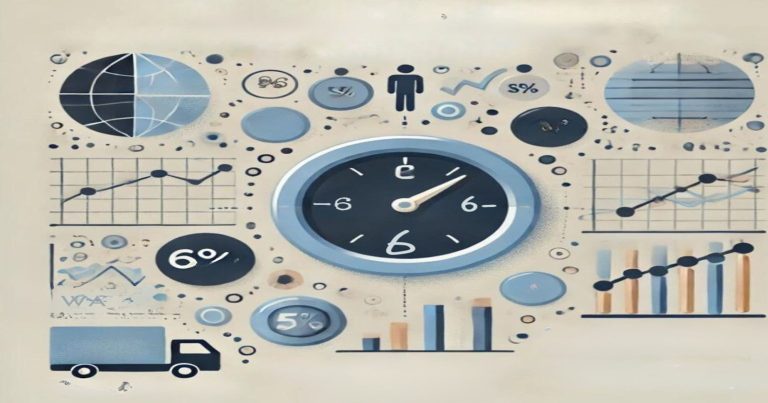Supply elasticity informs us of the extent to which producers can raise or lower the amount of a product they sell when the price changes. If supply is elastic, then producers can react quickly and easily. But if it’s inelastic, then even large price changes may not influence the quantity supplied. Supply elasticity informs us of how companies, farmers, factories, and industries react to trends in the market. In economics, knowledge of elasticity of demand and supply assists in forecasting market results and policy effects.
What is Elasticity of Supply?
The elasticity of supply refers to a measure employed in economics to indicate the extent to which the amount of a product supplied by producers varies when its price fluctuates. It provides an answer to the following two questions: “If prices rise, how much additional will the producers supply?” and “If prices decrease, how much less will they reduce production?”
Elasticity of Supply Formula
The formula of price elasticity of supply is:
Elasticity of Supply (Es) = (% Change in Quantity Supplied) / (% Change in Price)
- If Es > 1 → Elastic Supply
- If Es < 1 → Inelastic Supply
- If Es = 1 → Unit Elastic Supply
Example:
If a firm raises the number of phones it produces from 1,000 to 1,500 (50% rise) due to the fact that the price increased from ₹10,000 to ₹12,000 (20% rise):
Es = 50 / 20 = 2.5 (Elastic Supply)
Types of Elasticity of Supply
Various commodities and sectors react to price alterations in varying capacities. Following are the types of elasticity of supply:
Perfectly Inelastic Supply (Es = 0)
Whatever be the increased price, there is no variation in supply.
Graph: Vertical line
Illustration: Stadium seating capacity of 50,000. There can’t be any additional seating, even as ticket prices are increased.
Relatively Inelastic Supply (0 < Es < 1)
Quantity varies a bit when price varies much.
Example: Crops such as wheat or sugarcane. Farmers are not able to raise output in a hurry.
Unit Elastic Supply (Es = 1)
Change in quantity = Change in price.
Example: A factory raises production by 10% when the price goes up by 10%.
Relatively Elastic Supply (Es > 1)
A small change in price results in a large change in quantity.
Example: T-shirt producers raise output rapidly if prices go up.
Perfectly Elastic Supply (Es = ∞)
Companies will sell any quantity at a given price but will not sell even a single unit if the price is lowered.
Graph: Horizontal line
Example: Trading in commodities such as wheat or rice on a price-fixed platform
Determinants of Elasticity of Supply
Numerous factors determine how rapidly and how far producers can shift to changes in price. Determinants of elasticity of supply is the term for them.
Time Frame
- Short Run: Firms cannot alter much (inelastic).
- Long Run: Firms can build more factories, add more employees (elastic).
Resource Availability
- If raw materials are abundant, supply is elastic.
- If resources are scarce or costly, supply is inelastic.
- Garment industry: Cotton is available everywhere = Elastic
- Gold mining: Scarce gold = Inelastic
Product Flexibility
- Industries with flexible machinery or labor are able to adjust quickly.
- Those with fixed equipment or long production runs aren’t able to.
Example:
Car assembly: Moderate elasticity
Agricultural industry: Low elasticity
Spare Capacity Availability
If firms have spare machines or workers, they’re able to raise output without difficulty.
Full capacity = inelastic supply
Example:
A factory with 2 out of 3 lines of production operating can raise output with ease when there’s a price increase.
Storage Capacities
Goods that are to be stored for a long time can be released fast if prices increase.
Perishable items can’t be stored, therefore, elasticity is low.
Fresh milk – Inelastic
Factor of Production Mobility
If machines and labor are free to shift from one industry to the other, supply is elastic.
Example:
Shifting labor and machines from textile to mask manufacturing amid COVID was possible because machines and labor were flexible.
How Does Price Elasticity Influence Supply?
Price elasticity of supply influences the actions of businesses, consumers, and governments.
- Market Corrections: Elastic supply stabilizes the market. Inelastic supply can cause shortages or surpluses.
- Profitability & Revenue: Elastic supply = More profit during price increase Inelastic supply = Profits are almost the same
- Resource Allocation: Companies switch to more profitable products if supply is elastic. Inflexible production traps them in low-profit products.
Example:
Unexpected demand for electric vehicles (EVs) → Flexible production companies switched from fuel-based to EVs.
Elasticity of Supply Curves
Elasticity of supply curves are graphical plots that illustrate the way the quantity supplied of a product reacts to price changes. These curves have different shapes based on whether the supply is elastic or inelastic. Knowledge of these curves assists students in studying market behavior, forecasting producer reactions, and scoring well in exams.
Here’s a detailed analysis of each type of supply curve:
Perfectly Inelastic Supply (Es = 0)
Vertical line
This curve illustrates that the supply quantity remains the same irrespective of any change in price. This normally occurs when supply is absolutely fixed. For instance, seats available in a concert hall or a cricket stadium are not ever going to change even if ticket prices are doubled or tripled. It reflects no degree of production flexibility.
Relatively Inelastic Supply (0 < Es < 1)
Steep upward-sloping line
Here, when the prices rise, the supply quantity rises too but by a mere margin. This indicates that suppliers are less sensitive to changes in price. It typically happens in those sectors such as agriculture where time, weather, and seasons restrict how quickly farmers can produce more crops.
Unit Elastic Supply (Es = 1)
45-degree upward-sloping line
Here, the rate of change in quantity supplied is the same as the rate of change in price. For instance, if the price rises by 10%, producers raise supply by 10%. This is a kind of supply curve that reflects perfect equality between price and supply response, common in industries with moderate flexibility.
Relatively Elastic Supply (Es > 1)
Flatter upward-sloping line
When a minor change in price results in an enormous increase in supply, the curve is highly elastic. This typically occurs in manufacturing industries, such as textiles or electronics, where factories are able to step up production instantly if the price is remunerative. It reflects maximum responsiveness to price.
Perfectly Elastic Supply (Es = ∞)
Horizontal line
This indicates that at a given market price, producers are ready to supply any amount. But if the price falls even slightly, supply is zero. This is characteristic of highly competitive markets with homogeneous products, such as wheat, where producers have no price control and have to take the market price.
Importance of Supply Elasticity
Supply elasticity is not merely an abstract idea in economics—it is a real, influential force behind the decisions made by producers, governments, consumers, and policymakers. When supply is elastic, the economy is able to quickly adjust to change. When supply is inelastic, the economy struggles with shortages or inflation. Here’s why it’s significant:
For Producers and Businesses
Firms apply the elasticity of supply in organizing their production, pricing, and inventory decisions.
- Forecasting Sales and Revenue: If the supply is elastic, producers can raise production when prices go up with confidence, knowing they will be able to make profits. Elasticity enables them to forecast whether they will gain by investing in expansion.
- Production Planning: Companies can choose how much to produce based on how quickly they can scale up or down. Elastic industries such as textiles or electronics can easily change operations, becoming more competitive.
- Inventory Management: Elasticity informs companies how much inventory to hold. If supply is elastic and rapidly adjustable, companies require less inventory, which saves money.
- Risk Management: Inelastic supply industries (such as mining or agriculture) are more prone to price shocks, hence they prepare differently by holding stocks or entering long-term contracts.
Example:
An elastic supply smartphone manufacturer can manufacture more phones during Diwali sales, reacting to increased demand and prices—optimizing profits.
For Government and Policymakers
Elasticity enables governments to make improved economic policies that shield consumers as well as producers.
- Setting Minimum Support Prices (MSP): For crops such as wheat and rice, knowing supply elasticity helps the government decide the appropriate MSP. For inelastic crops, a modest price support results in significant changes in farmer income.
- Designing Import/Export Policies: If domestic supply of something is inelastic (such as pulses), the government can permit increased imports to match demand and regulate prices.
- Taxation and Subsidy Decisions: When supply is elastic, producers can easily change behavior according to tax adjustments. Therefore, the government has to check elasticity before imposing taxes or providing subsidies.
- Controlling Inflation: Inelastic supply tends to result in price increases when demand increases. Knowing this facilitates timely intervention by buffer stock release or price control.
For Consumers
Availability and price of goods in the market are based on the elasticity of supply.
- Product Availability: If the supply is elastic, products are always available even when demand goes up. This prevents shortages during holidays or when demand is high.
- Price Stability: Elastic supply prevents prices from increasing too rapidly. With inelastic supply, however, tiny demand increases bring enormous price rises, which ultimately harm consumers.
- Better Choices: Consumers enjoy many different products and more favorable prices in elastic supply industries such as clothing or electronics.
Example:
In India, vegetable prices skyrocket during monsoons as a result of inelastic supply. Farmers cannot raise production quickly, and thus prices skyrocket.
For the Overall Economy
The economic growth of the nation, employment level, and industrial progress are closely linked with supply elasticity.
- Employment Generation: Industries having elastic supply tend to grow quickly when prices are good, providing more jobs—particularly in industries such as garments, mobile assembly, or FMCG. Elastic supply supports rapidly moving industries, resulting in innovation and investment. Inelastic industries, however, require long-term planning and heavy capitalization.
- Supply Chain Flexibility: An elastic supply system with greater elasticity enables superior logistics management, rapid adaptation to demand, and effective resource allocation.
- Controlling Recession and Inflation: If industries are responsive to price signals, the economy is exempt from boom-bust cycles. Elasticity therefore ensures stability in the economy.
Example:
During COVID-19, firms that could switch to making masks and sanitizers showed high supply elasticity, supporting both public health and business recovery.
Elasticity of Supply FAQs
1. What is elasticity of supply?
Supply elasticity refers to the extent to which quantity supplied responds to changes in price. It indicates the responsiveness of producers to a change in price.
2. What is elastic when it comes to supply?
Supply is elastic if a little change in price results in an enormous change in quantity supplied. It normally takes place when it is easy for producers to modify production.
3. What determines elasticity of supply?
Key determinants are raw material availability, time taken for production, capacity, storage capacity, and the flexibility of the production process.
4. What is supply inelastic?
Inelastic supply refers to the fact that quantity supplied responds very little to price changes. This usually occurs when goods take time or are expensive to produce.
5. What is elastic and inelastic?
Elastic refers to high sensitivity to price change; inelastic refers to low sensitivity. These are used to describe both demand and supply.


